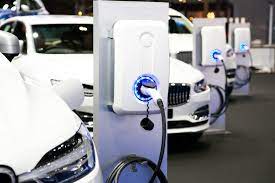
The processes involved in the production of goods and commodities are what often referred to as supply chain. While its management is worth hundreds of billions of dollars, it is largely difficult to quantify the machines, tools, and industrial equipment that go into supply chain activities. On the other hand, logistics deals with the movement of goods and items from one place to another and forms a crucial component of both supply chain and commerce.
The global logistics industry was valued at around $5.2 trillion in 2022 and is expected to gross $6.8 trillion by 2028, according to data released by the IMARC Group. This is nearly 5% of the world’s $105 trillion economy and represents a huge component in the global scheme of things, aiding the movement of goods, parcels, and commodities and ensuring that the wheel of commerce continues to move unhindered.
In a vastly growing economy like India with a $288 billion freight and logistics market, it is impossible to estimate how much value the sector holds for other aspects of the country’s economy. However, for all its intent and purpose, the supply chain and logistics industry also poses danger to humanity and the world at large. Whether it’s cross-continental, transnational, or last-mile logistics, there are different vehicles applied in global supply chain activities. These often involve the use of fossil fuels which release greenhouse gases (GHG) that poison the environment and affect the climate.
Going electric with supply chain management
Supply chains, especially in the manufacturing sector, are a major contributor to carbon emissions. This is why moving to renewable sources of energy has become a clamour in recent years. For example, the use of electric inverters to power machines and factory equipment will help cut down carbon emissions significantly. On the other hand, using electric-powered transport vehicles within factories as against combustion engines will also reduce air pollution and enhance efficiency of operations.
While this will require tons of battery power, there are already attempts at technology advancements that will simplify the transition in supply chains and make it easier and less cumbersome for batteries to handle.
Transforming logistics: The impact of electric vehicles
The electric vehicle revolution is spreading throughout industries and now making inroads into supply chain and logistics activities. While many experts believe EVs are the future of supply chain and logistics, it is not farfetched to suggest that EVs are already making a mark in the industry. The technology which uses batteries as against fossil fuels means that the release of carbon into the environment is prevented drastically, leading to responsible energy consumption and sustainability.
The logistics industry comprises the use of cargo airplanes, cargo ships, trains, trucks and haulage vans, mini-vans, motorbikes and scooters, etc. Majority of these vehicles are still powered by fossil and other non-renewable fuels. Due to their size and weight and the energy required per kilogram and distance, the world has not yet developed batteries that are powerful enough to power mass aircrafts and ships that cover long distances. Hence, there is need to find other ways to reduce the environmental effects of airplanes and ships.
As for large trucks, vans, and motorcycles, there is already significant entry of EVs into the industry. EVs are proving to be an effective and efficient alternative in last mile logistics, thereby reducing the impact of conventional transport on the environment. Besides adopting EVs, some global logistics companies are now experimenting with drones for deliveries within 30 minutes. With no tailpipe emissions, EVs pose no threat to the environment and is an efficient and more sustainable way to move the world.
Towards a more sustainable supply chain and logistics industry
According to the Global Scientific Journal, supply chains and logistics contribute nearly 15% of total global carbon dioxide emissions. This poses a complex problem that affects humans directly and indirectly, while also fostering the depletion of the earth’s resources and protective layer. Moving to a more sustainable and ecofriendly option like electric will not only safeguard humans, animals and the environment, but also optimise processes and lead to operational efficiency.
The author is the CEO & Founder of Statiq.